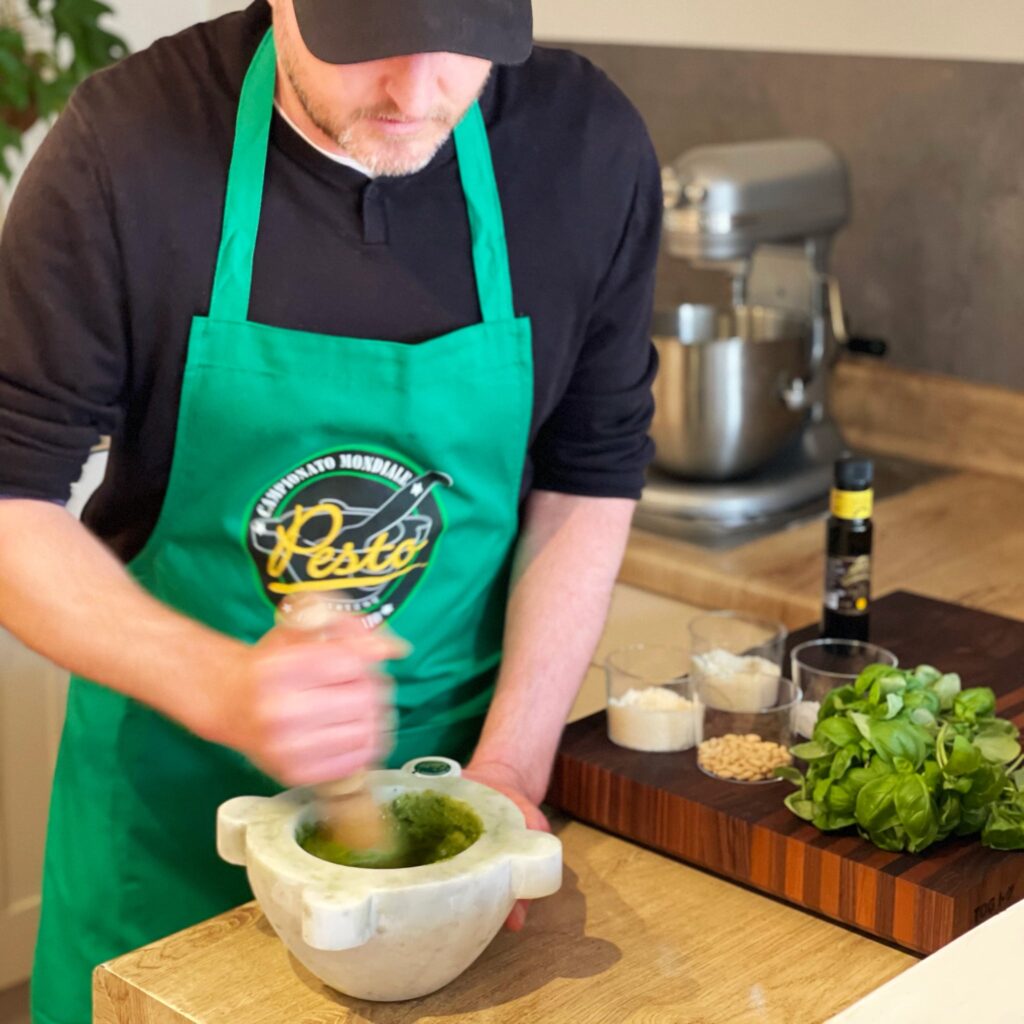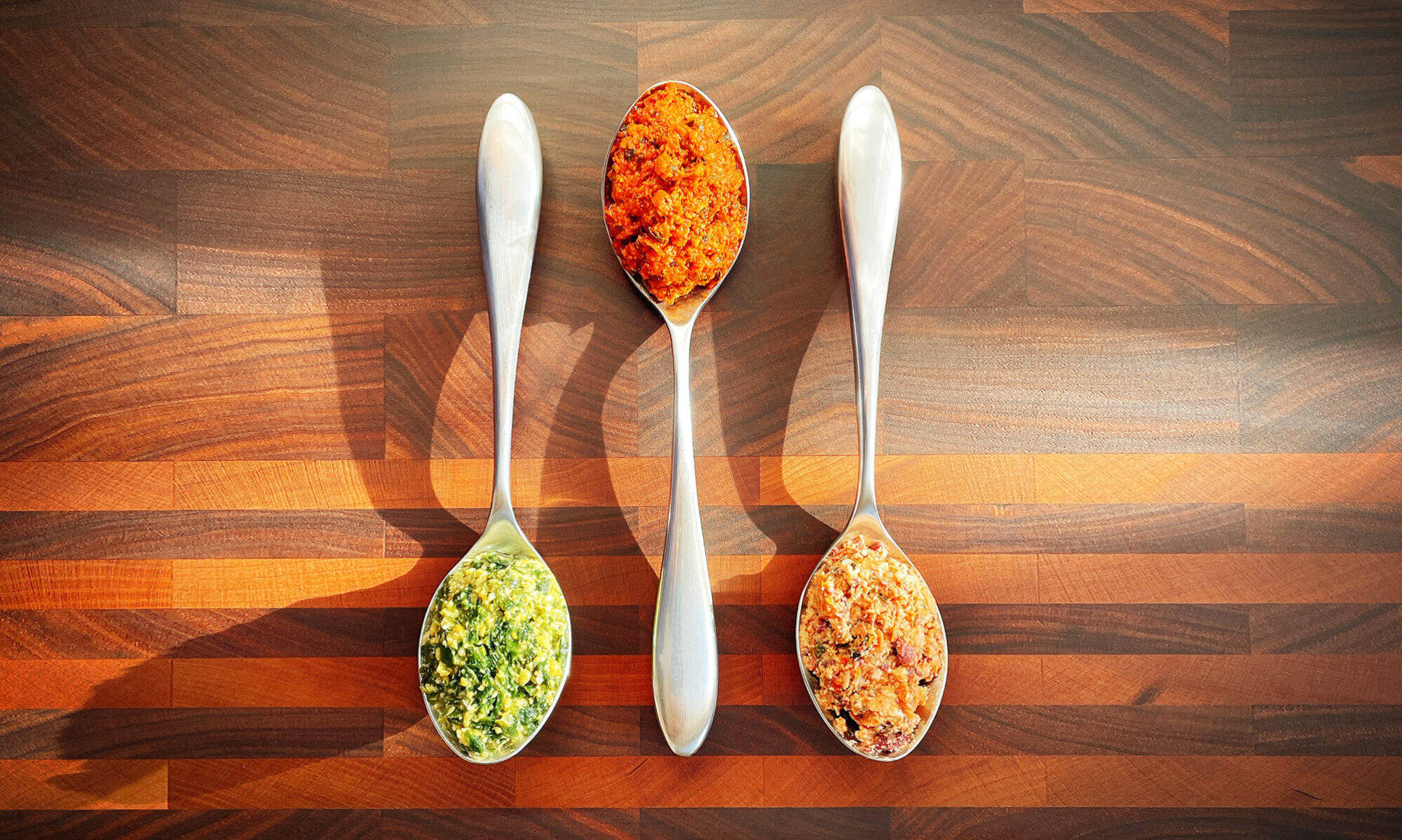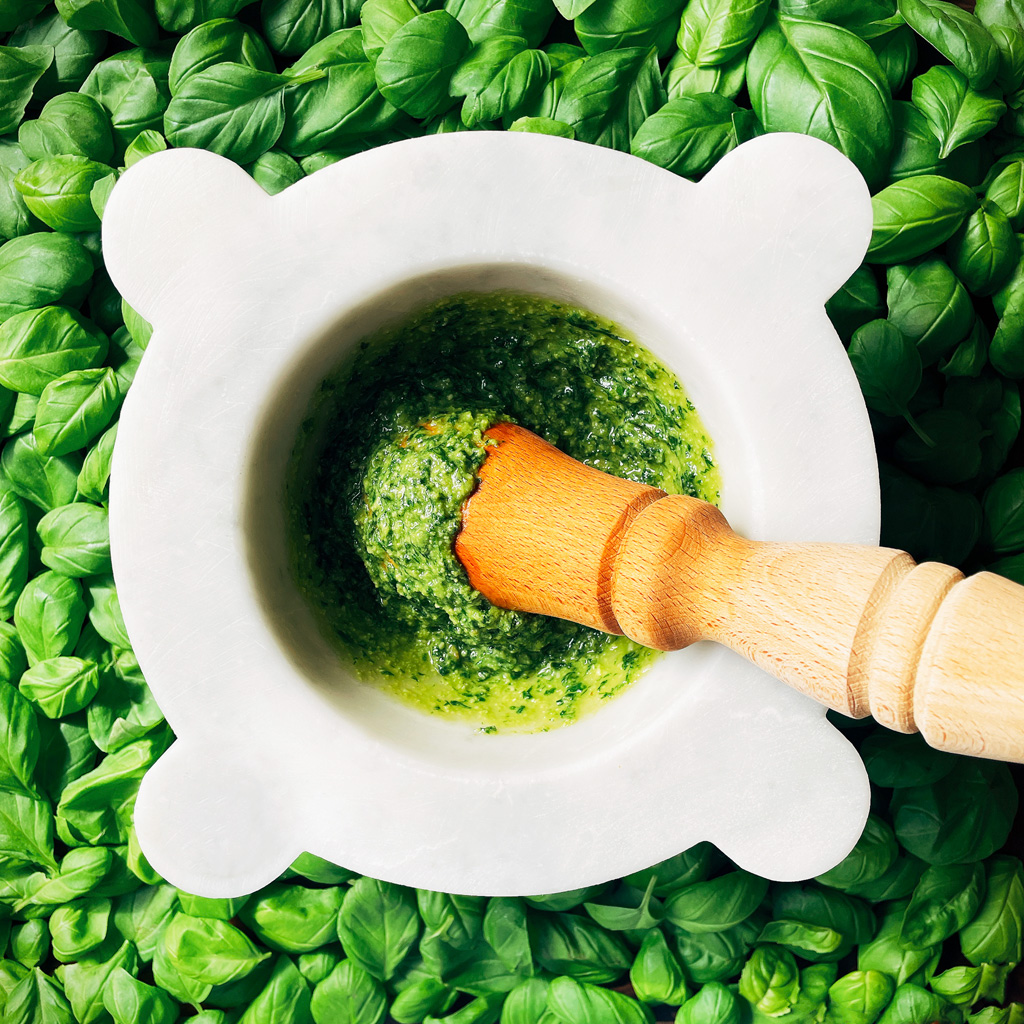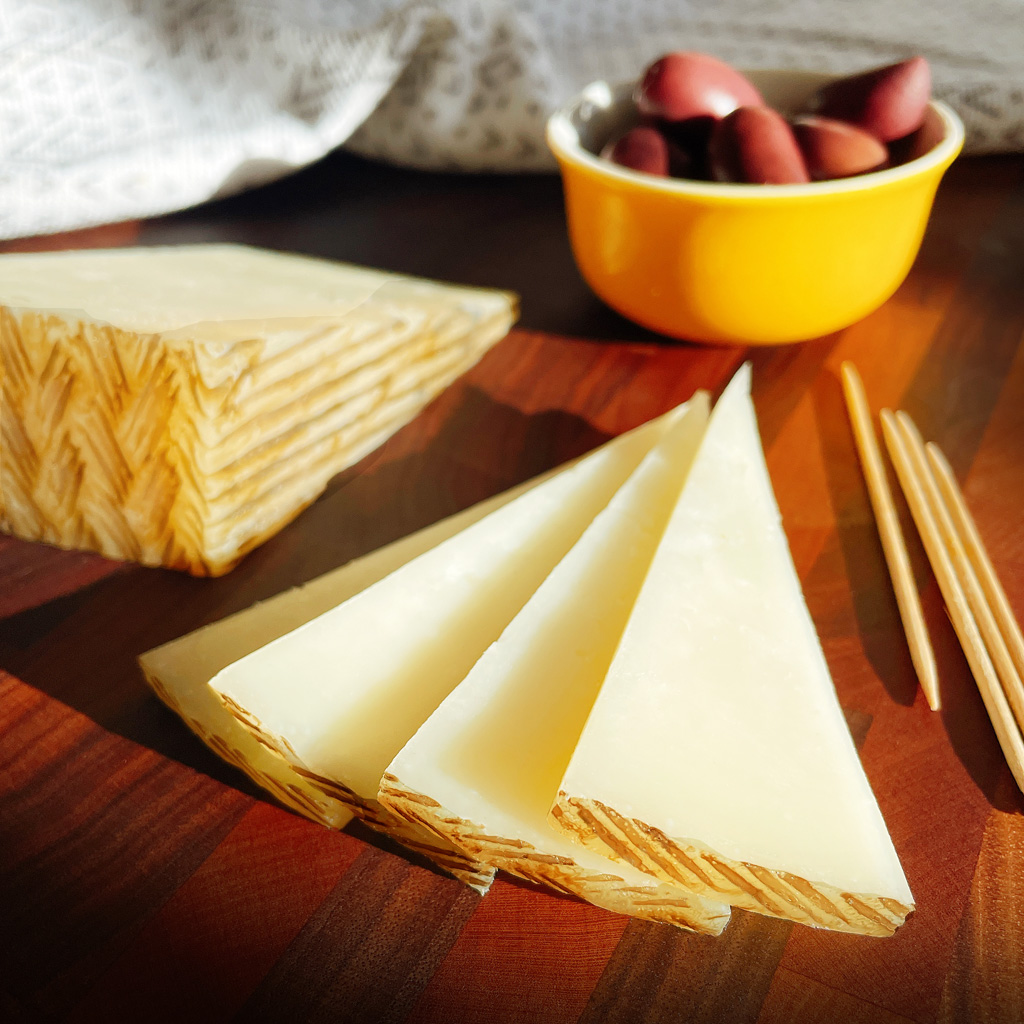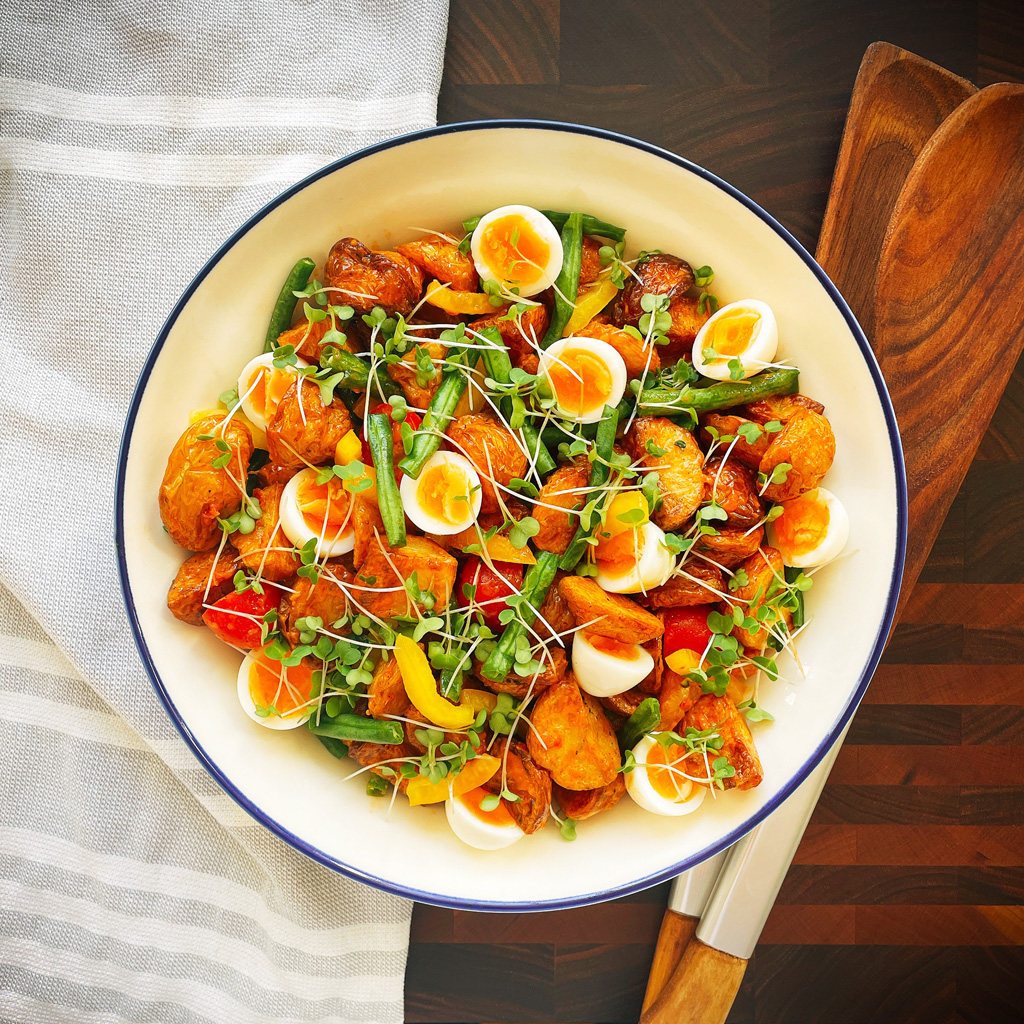Before the paint on the ceiling of the Sistine Chapel had dried, artists realised that The Masters had reached perfection.
There were no more artistic difficulties, technical or otherwise, to be resolved.
A new artistic movement, Mannerism, emerged. It didn’t aspire to surpass anything created by Michelangelo and his contemporaries, but it needed to be different.
It was time to forge a new path.
Fast forward three centuries, travel 500 km north, and the recipe that we know today as pesto Genovese was first published.
Of course, every Ligurian, from the rich to the poor, already knew that they had the perfect array of ingredients growing in abundance all around them: the creamiest pine nuts, world-class basil, garlic to rival the French, and the inimitable Parmesan. They had reached pesto perfection.
So, while we can knock up a basil pesto to rival the best of them, we think it’s time to take a leaf out of those Renaissance artists’ books by accepting perfection and forging a new path.
We’ve taken the unspoken but accepted ‘rules’ of Italian pesto: oil, cheese, nuts, herbs, garlic, and a little salt, and ventured into different cultures to produce products with a unique twist that not only respects tradition but, we hope, adds something to the evolution of the world’s greatest sauce in the process.
